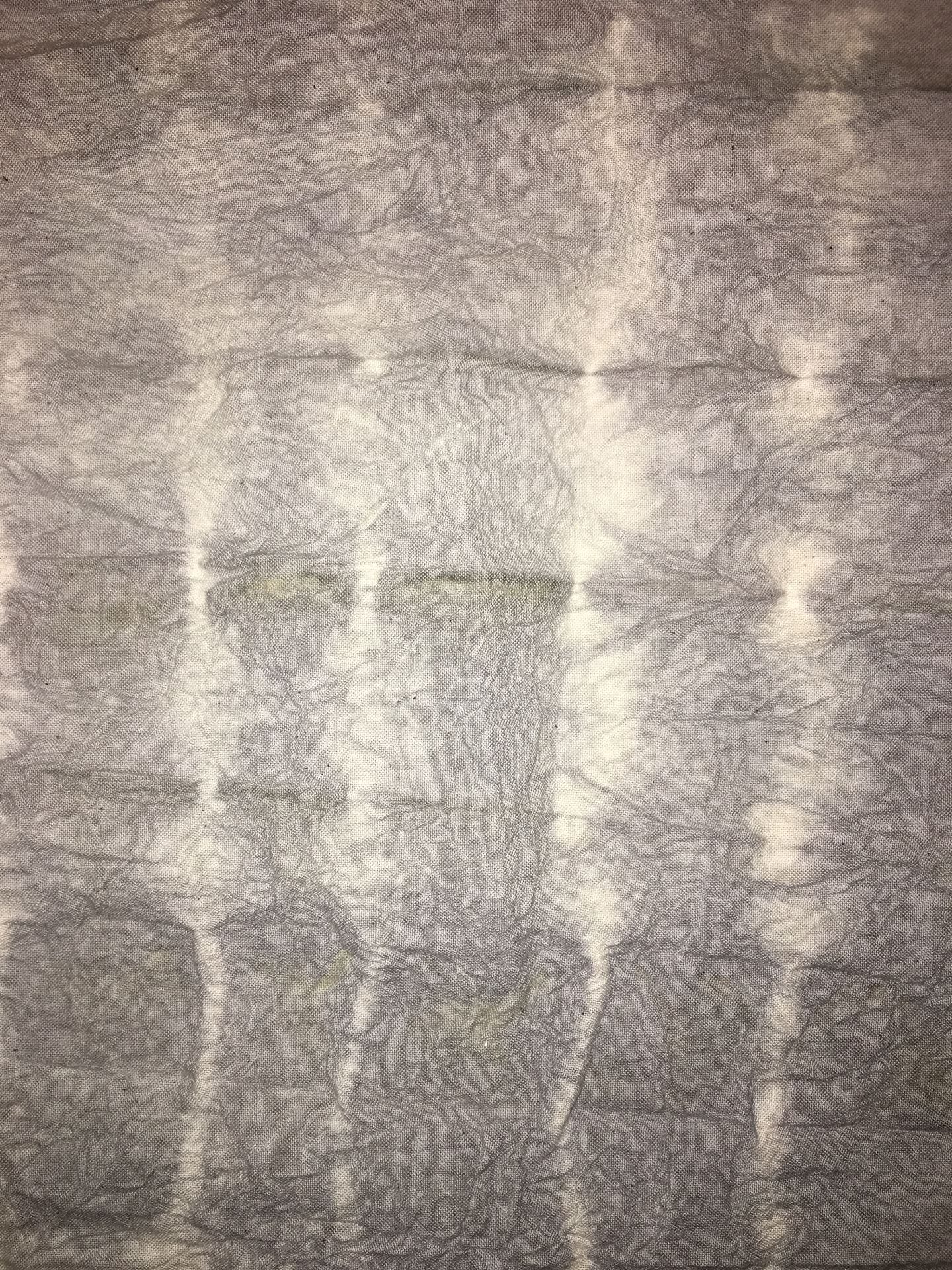Experiment Reflection:
1) What plant material did you choose? Where do you think it was grown? How many chemicals or gallons of water were used to grow it? How far do you think it traveled to the store?
- I choose to dye my materials with avocado skin and pits. The avocados I used were grown in California, meaning they traveled almost 3,000 miles to reach the supermarket in New York City where I bought them. In California, it takes 74 gallons of water to produce 1 pound of avocados.
2) Was the color different between the oily and clean wool samples? Describe the differences.
- Yes, the sample that was dyed and unwashed was only slightly tinged a light pink, however the sample that was washed and dyed soaked up more of the dye because there were no olis on the material, this made the wool and fabric a darker pink that the unwashed sample.
- Yes, I found that the samples I cleaned held the dye better than the oily, unclean sample.
3) Was the color different between the cotton samples (dyed-not-rinsed, dyed-rinsed, dyed- mordant-rinsed)? Describe the differences. How was the color different between the cotton and wool samples?
- The dyed-not-rinsed sample did not hold the dye well and only turned a light pink
- The dyed-rinsed sample turned a stronger shade on pink than the unwashed sample
- Both the Alum-mordant sample and the Tartaric-mordant sample turned a light yellow
- The Soda Ash-mordant turned the brightest pink, however the fabric strip was affected more than the wool sample
- The Iron-Mordant dyed both the materials dark grey
- Both the iron-mordant and the soda-ash sample changed color the most drastically
4) You dyed two natural fibers (cotton and wool). Hypothesize (guess) how the natural dyes might work on synthetic fabrics such as polyester
- I would assume that the dye would react better with natural fibers as opposed to synthetic fibers as natural fibers would be more porous and would soak up and hold the dye better. The plastics and chemicals in synthetic materials would make it harder for dyes to soak and stay in the fabric.
5) How satisfied are you with the outcome?
- I am very satisfied, I was able to see a range of different colors from my one original dye bath.
6) To do this tiny natural dye experiment, you used water in many different ways and disposed it in a sink. List all the things the water picked up and you put down the drain. How is the water going to become clean again?
- The water picked up:
- Wool
- Avocado scraps
- Soap
- Various mordants
- Oils from the fabrics
- The water will go through various filtration systems to be clean again
7) Is it ok to put your waste water samples in the drain? Why? How is it different than industrial quantities of natural dyes or synthetic dyes?
- Yes, because we are only using natural biodegradable materials and dyes, nothing harmful to the environment. Industrial Factories however use synthetic materials and chemical dyes that do negatively affect the environment.
8) Now think of the tons of fibers that were dyed this year for fashion, imagine 1 innovation that fashion or home décor designs might do to reduce pressure on clean water necessary for drinking and bathing (what could you eliminate, reduce, change, improve)?
- If the fashion industry began to use fully biodegradable and natural materials and refrained from the use of chemicals, the excess fibers that ended up in water would not negatively affect the water, the environment, or humans. It’s a similar idea to what the fabric manufacturer we learned about did for the fabric of wheelchair seats. They used no harmful chemicals, only natural dyes, and the water that left the factory was even cleaner than the water that entered it.
9) Reflections: Will you do more natural dyeing? Were you surprised? What might you consider if using natural dyes in your own projects/products? What has not been considered? Why do you think natural dyes are uncommon? Do you think natural dyes are safer for the environment? Why or why not?
- Yes I will do more natural dye because I was pleased with the results of my first piece of fabric and I would like to experiment with more colors. Natural dyes are more uncommon because they take much longer to produce and are more work than synthetic dyes. Yes I think natural dyes are safer for the environment because the materials used to create the dyes are biodegradable and non toxic to the environment.
Process Photos:
- 2 avocados were used for dye bath
- The avocados were boiled for an hour
- Wool and fabric were soaked for 25 minutes
- Wool and fabric were soaked in mordant baths for 15 minutes
- Muslin was soaked for 25 minutes in dye bath
- Muslin was soaked in Iron for 15 minutes
- All materials were left to dry for a day
PH Scale Photos:
Shibori Dye Photos:


















